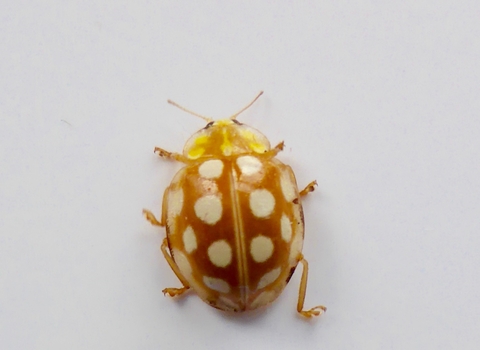
Orange Ladybird ©Nancy Coppock
Orange ladybird
The orange ladybird is pale orange with up to 16 cream spots on its wing cases. It feeds on mildew on trees like sycamore and ash, and hibernates in the leaf litter. It often turns up in moth traps.

Orange Ladybird ©Nancy Coppock